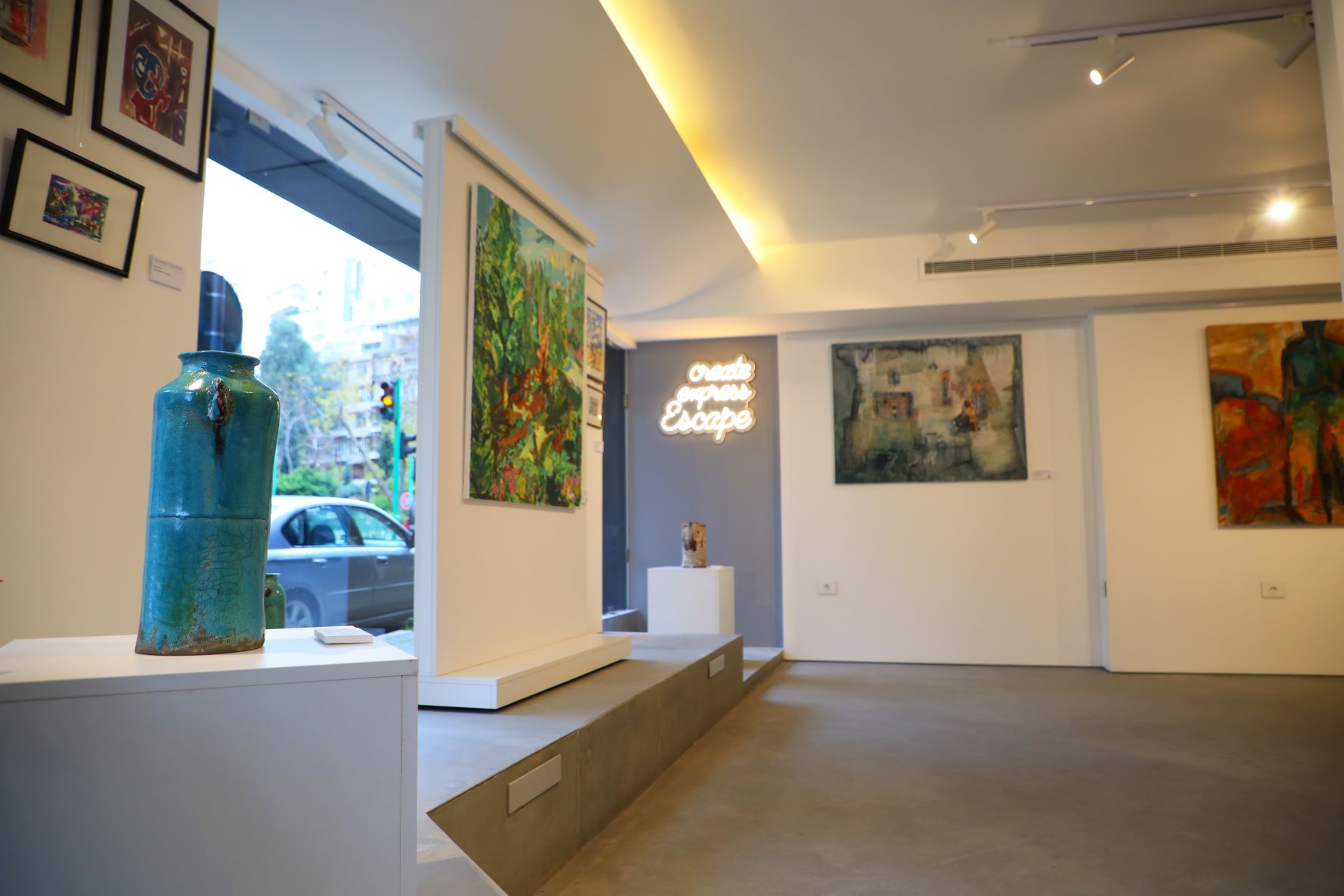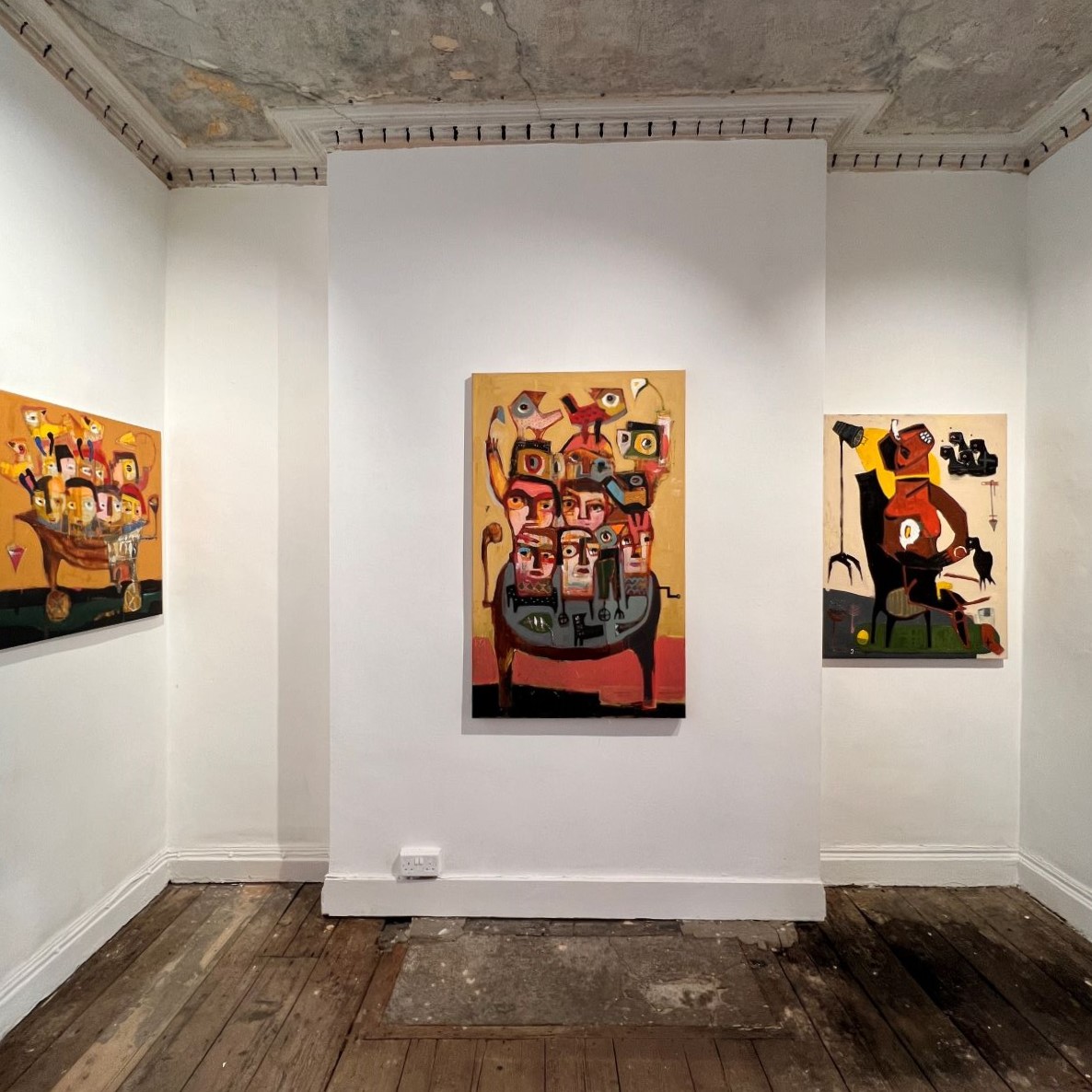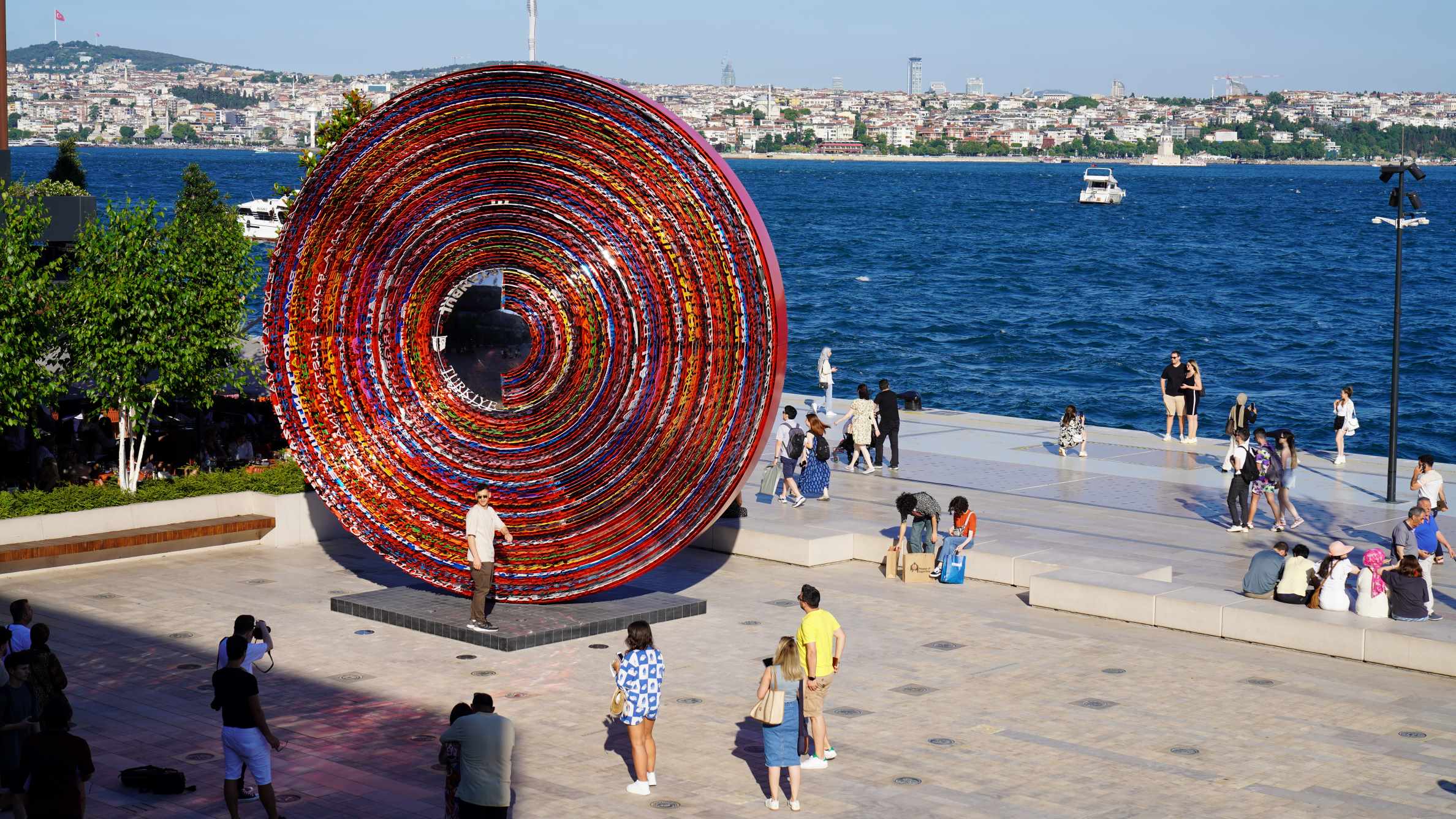
“Istanbul, the City of Names” public sculpture by Ahmet Güneştekin in Istanbul’s Galataport
The sculpture “İstanbul, the City of Names” is a must-see site-specific work by Ahmet Güneştekin. Make sure to visit this artwork in Galataport on your next visit to İstanbul.
From the moment I saw the sculpture “İstanbul, the City of Names” by Ahmet Güneştekin, I was intrigued; how many names did İstanbul actually have throughout its history? And what motivated the artist to document every single one of those names in such a splendid, site-specific creation? The sculpture is truly a monument in the city’s Bosphorus banks, in an area known as Galataport. It draws in tourists and art-enthusiasts alike. I reached out to the artist to ask him more about this colossal sculpture, which stands at 7 meters in diameter and 1.8 meters in depth.
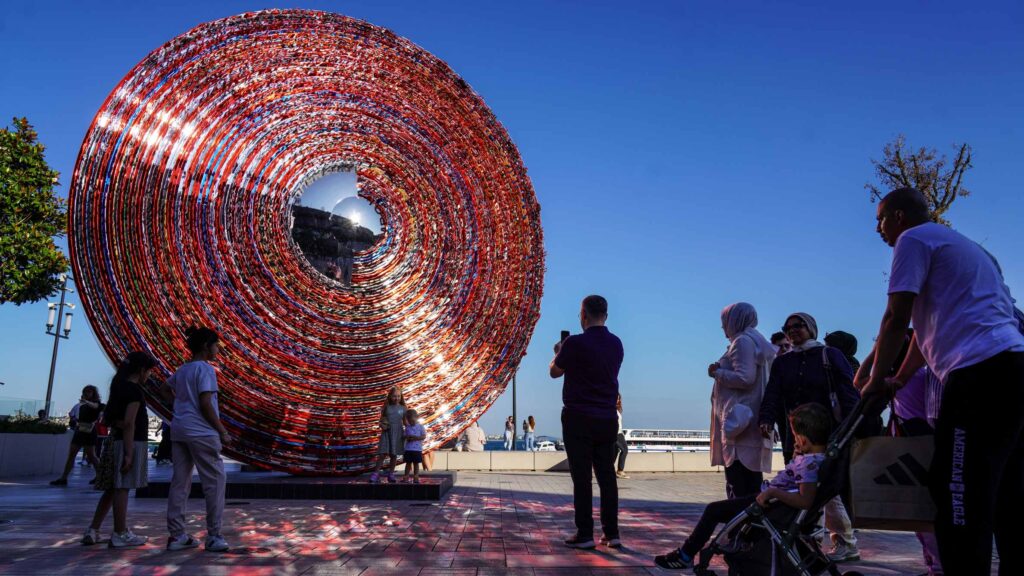
“Istanbul, the City of Names” public sculpture by Ahmet Güneştekin, as seen during the day (photo courtesy of the artist)
Ahmet Güneştekin (b. 1966) is a self-taught, contemporary visual artist born in Batman, Türkiye. His work encapsulates painting, videos, documentaries, installations and site-specific sculptures. He is well-known internationally, and has had solo shows in New York, Miami, Hong Kong, Barcelona, Madrid, Dubai, Vienna, Berlin, Monaco and Venice, in addition to İstanbul, Izmir, Ankara, Diyarbakır and Bodrum in Türkiye. He has also participated in group shows, and he currently resides in İstanbul.

“Istanbul, the City of Names” public sculpture by Ahmet Güneştekin, as seen at night (photo courtesy of the artist)
In my interview with the artist, I inquire about the project “İstanbul, the City of Names” which was launched in 2022. I also ask him about his current, ongoing project, the solo exhibition “The Lost Alphabet” which opened this year 2025 at Artİstanbul Feshane, in İstanbul.
Maie El-Hage: It is very nice to meet you Mr Ahmet Güneştekin. Concerning the project “İstanbul, the City of Names”; why was it important for you to work on this project at that specific time?
Ahmet Güneştekin: İstanbul is a city of multi-layered memories and histories, not confined to a single narrative. These stories and histories depend on the perspectives of its visitors walking its streets, lifelong residents, immigrants, or those forced to leave it, never returning. Contrary to the common saying, İstanbul is not only where East meets West, but East and West look hard and longingly at one another, sometimes nettled by what they see yet interested to learn that they share dreams and stories. Even its location on multiple bird migration paths signifies larger patterns. The city was destroyed and rebuilt innumerable times and suffered many name changes, most of which were wiped out during the first half of the 20th century. Underlying these changes lies a deep, inescapable continuum. This is a linguistic continuum, and it is as important to a city’s identity as continuity in space. Through the installation, İstanbul, The City of Names, I show how the city’s names in the past reflect dramatically changing realities and its social and cultural transformations. These names testify to the city’s mythical cosmopolitanism as well. I reside and work in this city, but like almost every İstanbulite, I have roots in Anatolia and beyond. The city’s diverse cultures intersect, making it crucial to connect past events to current issues by examining the city’s continuities and ruptures, fostering understanding and empathy.
"İstanbul is not only where East meets West, but East and West look hard and longingly at one another.." Ahmet Güneştekin
Maie El-Hage: I see. So, is the project about preserving İstanbul’s heritage through the context of contemporary art? Tell me more about that.
Ahmet Güneştekin: İstanbul was not always İstanbul. It has been Byzantium, Constantinopolis, and the Second Rome. It was just polis in the mid-Byzantine period, Kostantiniyye, İslambol, Dersaadet, and many other names in the Ottoman period, but it was never simply İstanbul. Each toponymic change manifests a radical differentiation in urban space and a change in its social meaning. Part of İstanbul’s uniqueness springs from its layering of historical periods and the stories of its different ethnic groups and religions that intersect, compete with and contradict one another. Byzantine history, Ottoman history, and the stories of the city’s Greek, Armenian and Jewish minorities are all part of a simmering stew. The cultural heritage of four empires and numerous civilisations has built the city where I live. Its many names reflect the language and culture of its diverse inhabitants. In contemporary art exhibitions, the narratives produced through effect arise from the tensions and interplays between form, content and the viewer. Heritage sites offer this potential because they mediate between past and present, space and objects, and absence and presence. I envision these sites as possible worlds that work through affective and imaginative engagement to develop historical understanding. The exhibition space of my installation is among these sites. In this sense, my spatial and temporal approach, which expanded over the years and focused primarily on large-scale, site-specific works, creates a dialogue with a particular architectural, urban, or landscape setting in the public space of Galataport. So, I think the installation shows my scale change and connects the exhibition space to İstanbul’s history.
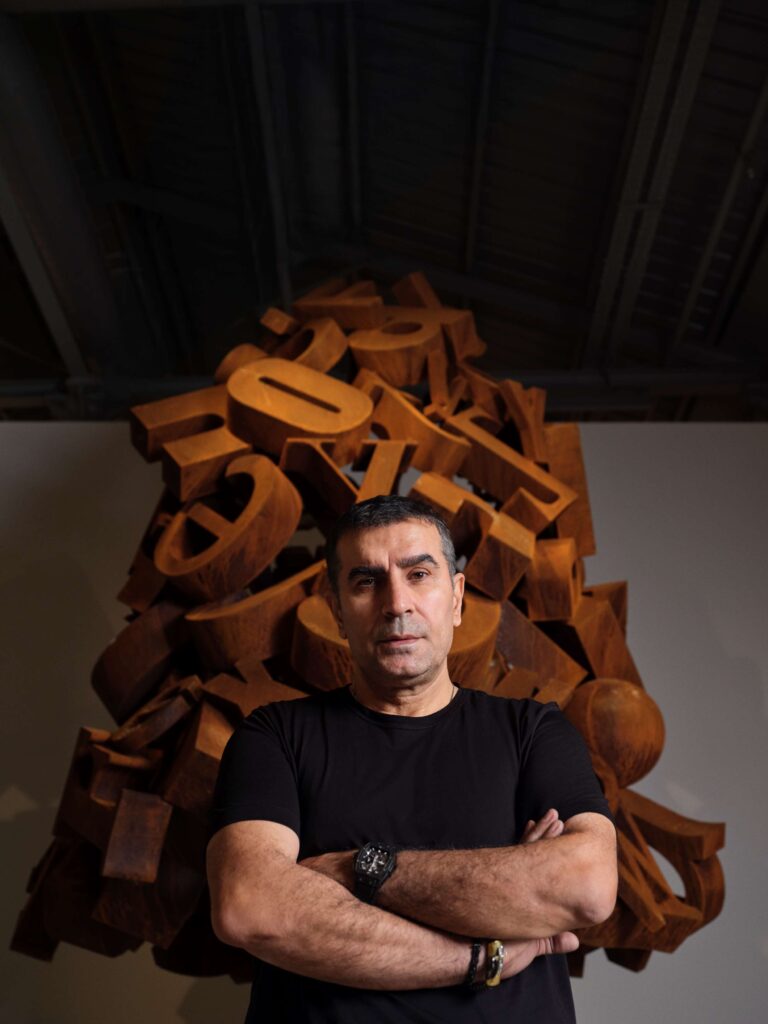
Ahmet Güneştekin, artist portrait (photo courtesy of the artist)

“Angels of Alphabet” installation (2024) by Ahmet Güneştekin (photo courtesy of the artist)
Maie El-Hage: I see the importance of language in this project. Tell me about the intersection of language and art in your work.
Ahmet Güneştekin: Names are fragile cyphers for dramatically changing realities: sequential or synchronous, reminders of a past life or past glory. İstanbul, The City of Names reveals the names and cultural layers of the city throughout its history, while the ground floor consists of works from coin finds from the periods of four empires. The massive double-sided circular work, viewed from both sides identically, recalls the city’s multi-layered history and evokes its linguistically and culturally diverse structure through numerous wheels and functions. Each element arranged on the wheels and circular panels represents the nature of cultural, linguistic, and historical continuity and change. Each new name stands as a monument to a vanished language. The language of a former reality is transported to a new home. I have always been fascinated by the idea of language as a complex and living system. My works with letter forms blossomed with my first major exhibition in the art scene, the Momentum of Memory in Venice, dated back to 2014. The forms of language, the alphabet, shape what we think and the world we think we know. Therefore, this series of my work, including the İstanbul, The City of Names installation, is the revitalisation of symbolic images that belong to cultural memory. In this work series, using letter forms as an alphabet where different sounds exist and speaking in all aspects reflects my sensitivity to lost alphabets and languages.

“Göbeklitepe” (2024), Mixed Media sculpture by Ahmet Güneştekin, on view at Artİstanbul Feshane (photo courtesy of the artist)
Maie El-Hage: What is the significance of Doğuş Square in Galataport?
Ahmet Güneştekin: Karaköy, an essential district of Galata, one of the culturally colourful areas of İstanbul, was founded by the Genoese in the 12th century. And hidden everywhere, if you know where to look, remain traces of the minority populations that once made Constantinople – as most people of whatever religion or ethnicity called the city before the founding of the Turkish Republic in the 1920s – perhaps the most ethnically diverse city anywhere. The area had been home to many cultures, including Jews, Genoese, Greeks, Romans, French, Venetians, and Ottomans. Many of these communities lived together for centuries there. One of the public spaces in this district is the newly named Doğuş Square, which hosts my installation. Covering an area of 2500 m², the work introduces the city’s history woven with different cultures and languages and its many unknown aspects to the local and foreign guests of the port.

“Anatolia” (2024), Installation by Ahmet Güneştekin, on view at Artİstanbul Feshane (photo courtesy of the artist)
Maie El-Hage: What can you tell me about your current exhibition project, The Lost Alphabet? What do you hope to achieve with this solo exhibition?
Ahmet Güneştekin: Every exhibition ties itself to the city through a cultural policy depending on how it addresses questions like how relationships among creators, subjects, and viewers of art are constructed. Situated at the intersection of local and global concerns, İstanbul, first and foremost, hosts cultural diversity. The Lost Alphabet focuses on unveiling these cultural differences, however, this is not the sole aim of the exhibition. It offers me a special platform to present my works interwoven with macro and micro scales across various disciplines. The works in this exhibition, ranging from sculptures with stone formations formed over millions of years, some of which contain fossils, to installations with evocative objects and sounds, have different effects on the viewer’s movement and perception. I focus on these perspectives and contemplate how encounters can occur in the context of art exhibitions, both between people and between people and things. The exhibition space is also the city’s largest public cultural and art venue. It was a factory of urban and symbolic significance—one of the earliest examples of an industrial heritage combining steel and glass, restored by İstanbul Metropolitan Municipality (IMM) Heritage. As is the case with such historical venues, the curation of the space required greater sensitivity. So, we acted accordingly and sought ways to align the artworks with the aura of the space.
Maie El-Hage: Thank you so much for your time, Mr Ahmet Güneştekin.

The artist Ahmet Güneştekin with his sculpture “Anatolia” (photo courtesy of the artist)
Make sure to check out Ahmet Güneştekin’s site-specific sculpture “İstanbul, The City of Names” at Galataport, İstanbul, on your next visit to the glorious city.
You can also see Ahmet Güneştekin’s latest work “The Lost Alphabet” at Artİstanbul Feshane, İstanbul, which remains on display until 20 July 2025.
Follow Ahmet Güneştekin on Instagram here.
Follow the author Maie El-Hage on Instagram here.
Photo credits: all photos are courtesy of the artist Ahmet Güneştekin.
You may also like
2023 for Art Historian Maie
In this article, the founder of the Art Historian Maie brand, Maie El-Hage, recaps 2023 and all she
Escape Gallery Promotes Emerging Artists in Beirut
Sana Jaber founded Escape Gallery in December 2022 in Beirut. She intends to support and promote the
Birdman Takes London: Semaan Khawam at Hoxton Gallery
In his latest London solo show, Semaan Khawam a.k.a. Birdman unveils ‘Birdman Wings & Wheels’ at



